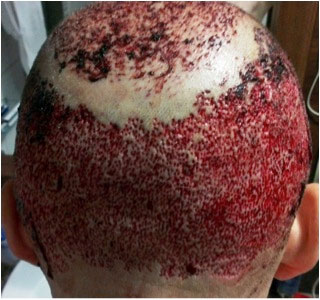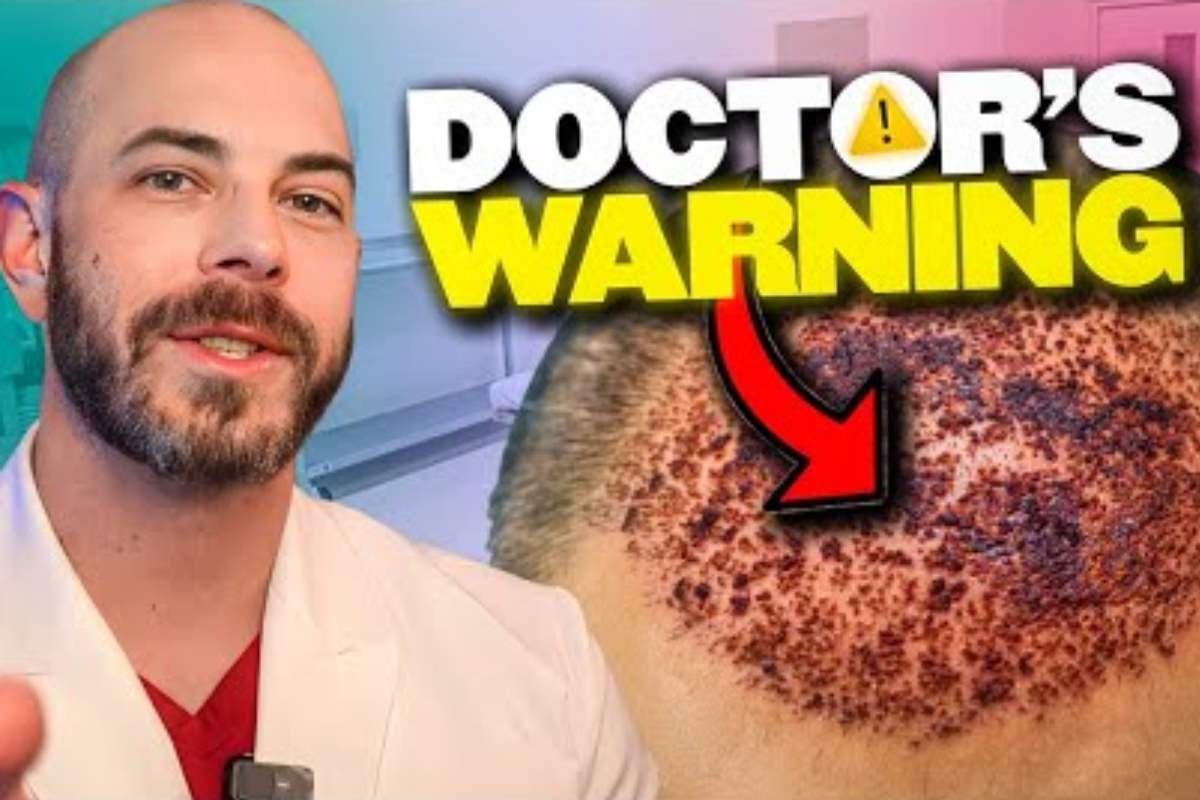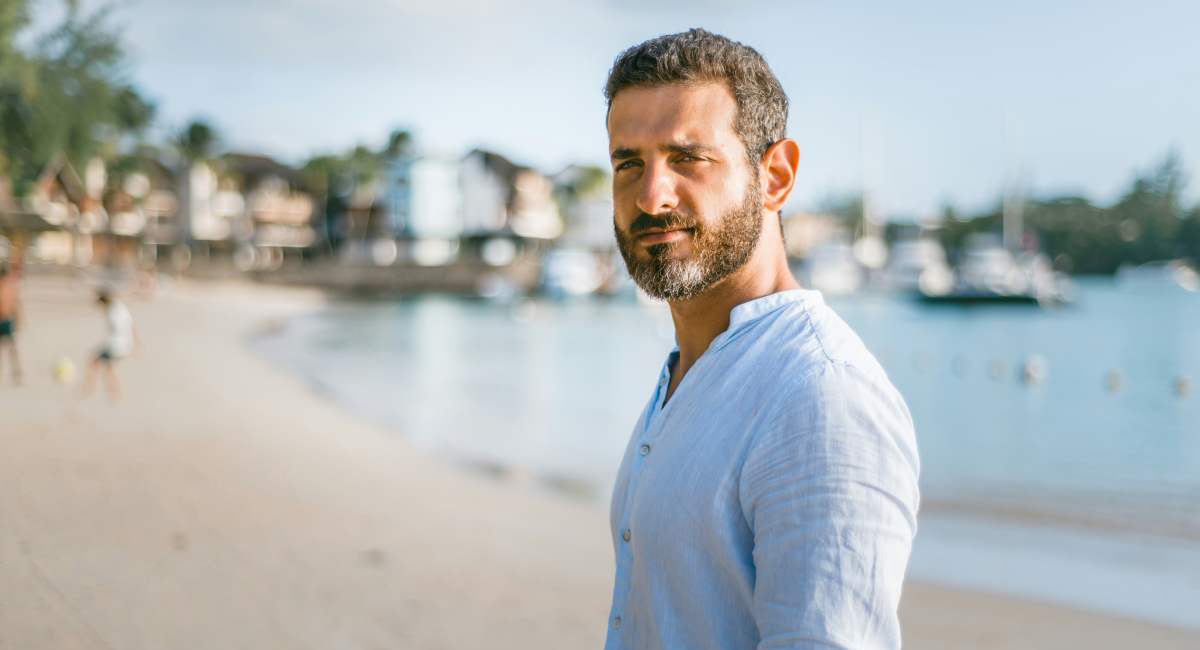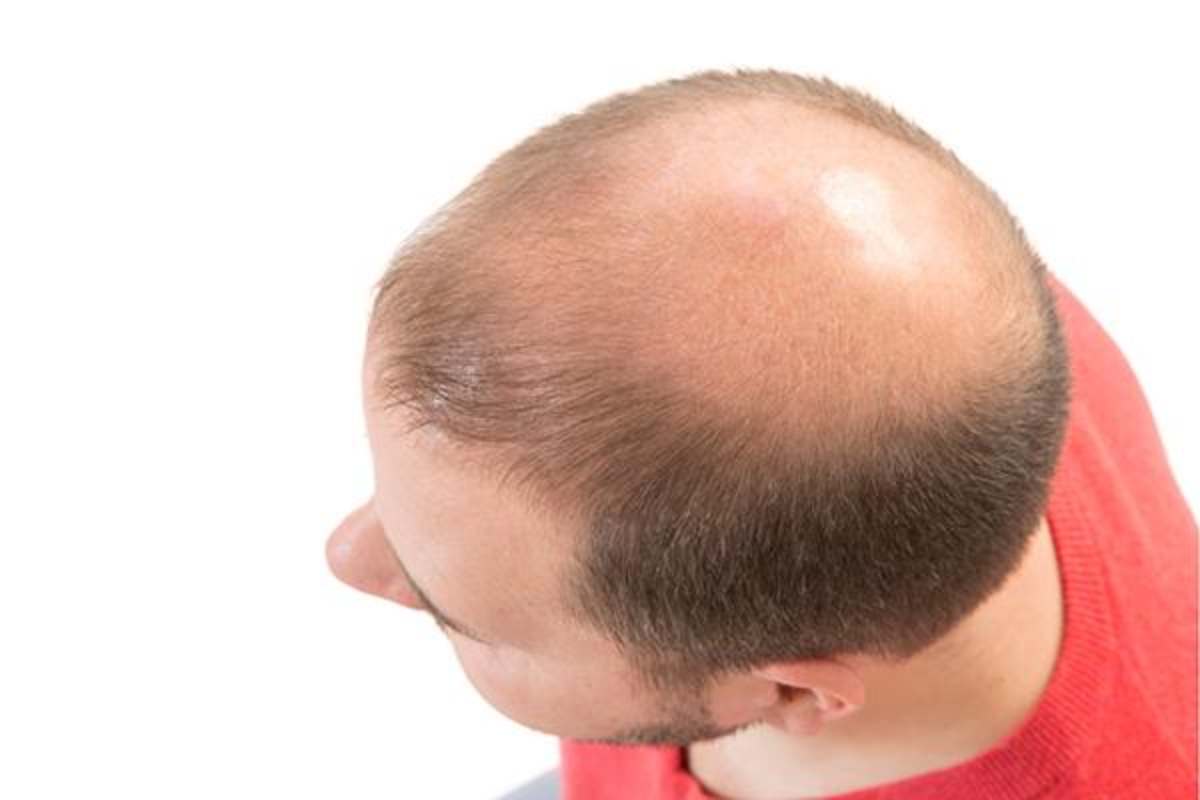It’s intimidating for anyone to go under-the-knife. After all, there are always potential health risks including infection, scarring or adverse reactions—even for minor surgical procedures.
But when it comes to hair transplant procedures specifically, what other complications could arise? Can a hair transplant procedure fail? And if they can, how can patients ensure they only receive the best results?
In rare circumstances—yes—it is possible for hair transplants to fail. However, in the far majority of these rare cases, failure occurs because of incompetence from an unqualified hair restoration surgeon and in even rarer cases, due to an issue with the patient.
So, how do you choose the right surgeon to minimize any risk of a hair transplant failure? And how do you ensure that you are a good candidate for a hair transplant? As long as you do your due diligence, ask questions and choose a reputable, certified center, true failure of a hair transplant is highly unlikely.
How Do Hair Transplants Work?
To properly comprehend how hair transplants can fail, it’s important first understand the basics of how hair transplants work and the different types of hair transplants.
We have covered this topic many times on our website, so here’s a brief rundown of the types of hair transplants and how they work.
Two Types of Hair Transplants FUE vs FUT
Currently, the two types of hair transplant procedures are the follicular unit excision (FUE) and the follicular unit transplantation (FUT). As long as the procedure is done correctly, both the FUE and FUT create incredible results that appear completely natural to the naked eye.
Both procedures involve taking thousands of tiny grafts from the patient’s donor area of the scalp. Each graft contains a hair follicle with 1–3 hairs each. Then, small incisions are made on the patient’s balding areas and the grafts are carefully inserted.
Within three to six months, the patient will start seeing their own hair sprout. Once the hair has grown in, there will be no noticeable scarring.
Hair transplants have significantly evolved since first introduced decades ago. No longer are men left with those obviously-looking “plugs” of yesteryear. Enhanced technology now allows surgeons to make 1mm incisions, or smaller, to harvest individual hair follicles when using the FUE technique instead of the old-fashioned procedure requiring 3–4mm round punch incisions. Or, when a trichophytic surgical closure is performed with a FUT, the linear scar is no more than 1-2mm in width.
However, keeping up with modern hair transplant techniques also means keeping up with proper training. Though a couple of millimeters sounds insignificant, surgeons must undergo extensive training to learn how to properly execute innovative procedures like this. Otherwise, at best, results might turn out shoddy. At worst, the transplant could completely fail.
Why Do Hair Transplants Fail?
So, what exactly happens when a hair transplant fails? There is a lot that can go wrong to cause hair follicles to die during the tedious process: The follicles harvested from the donor area can be transected due to poor harvesting technique, they can undergo undo stress through rough handling, they can be left outside the body for too long, they can dry out if not in the right storage solution, or they can be improperly implanted into the balding areas.
All of these factors can lead to poor growth of your precious hair. A hair transplant failure can appear as anything from sparse coverage to uneven growth to the complete absence of all hair follicles.
Surgeon-Related Issues That May Cause Failure
Inexperience or Lack of Experience

A surgeon who lacks sufficient experience and expertise in performing hair transplant procedures may increase the risk of failure. The intricate nature of the procedure requires precision and skill, and inexperienced surgeons may struggle with accurate graft excision and implantation. And if you know anything about hair transplantation, you know that the technicians are equally important to the outcome. A hair transplant is not a one (wo)man job. Dr. Krejci surrounds herself with 8 highly trained technicians that perform the crucial steps of dissecting, preparing, and placing the grafts. Working together like seamless and well-choreographed team to execute a successful hair transplant.
As with anyone who is skilled in their profession, someone who has been doing something for a long time, and has become good at that skill, will have much better results in the end. Seeking out an experienced hair transplant surgeon will help to minimize any possibility of your hair transplant failing.
Well-trained surgeons know how much hair to take from a patient’s donor area without going overboard. They also err on the side of taking less follicles in order to leave some for future procedures since the unfortunate truth of balding is that there is no cure. Native hair will continue to thin so if your doctor overharvests on the first go round, it can lead to regrets later.
Proper Equipment and Technique
The use of outdated or inadequate surgical techniques and equipment can compromise the success of a hair transplant. Surgeons should stay updated with the latest advancements in the field to ensure optimal outcomes. Inadequate technique can lead to graft damage, poor survival rates, and unsatisfactory results.
At our facility, we pride ourselves on staying up to date on the latest in hair transplant technology. We have invested in robotic and motorized FUE machines as well as updated microscopes and insturments for FUT. In addition, Dr. Krejci and her staff participate both as teachers and learners in continual medical education courses in order to be at the forefront of hair restoration. By staying up with the latest science and technology, the Limmer team aims to minimize risk to the patient and improve upon the results seen.
Proper Post-Op Care and Follow-Ups
Proper follow-up appointments and information regarding post-op care from your doctor is essential in helping the healing process. Surgeons must provide patients with comprehensive instructions for aftercare, including proper cleansing, medication usage, and lifestyle modifications. Failing to provide adequate guidance and follow-up may increase the risk of complications and graft failure.
Patient-Related Issues That May Cause Failure
Hair Loss Pattern and Extent
The success of a hair transplant can be influenced by the pattern and extent of hair loss. Patients with advanced or diffuse hair loss may have limited donor hair available for transplantation, which can impact the overall outcome.
While this isn’t necessarily the hair transplant procedure itself “failing,” if a patient has significant hair loss in a pattern that makes it impossible to excise the appropriate number of follicles to produce results, it could appear as though the hair transplant did not work.
This also shows how important it is to choose a qualified and experienced doctor. A good doctor would recognize advanced patterns of hair loss – or the potential for advanced Norwood pattern in the future. A reputable hair transplant doctor will not just take your money for a surgery that you think you want now, knowing that performing a hair transplant may not be the best idea in those circumstances.
A hair transplant failure can also include the overharvesting of the donor area. Everyone has a finite number of healthy hair follicles. Once removed, there’s no putting them back nor will they grow back. If a surgeon takes too many FUE grafts too close together or takes too wide of a strip that makes the closure very tight, it can lead to unsightly scarring in the donor area. This may be hard to cover up when your hair regrows or worse yet, there will be patchy and permanent unnatural growth.
Donor Hair Quality
The quality and quantity of donor hair play a significant role in the success of a hair transplant. If the donor area lacks sufficient healthy hair follicles or the hair is weak and miniaturized, it will compromise the transplant’s effectiveness and longevity. Due to the phenomenon known as “donor dominance,” when hair follicles are transplanted to the top of the scalp, they maintain the genetics from wherever they came from (the donor zone). The entire premise of a successful hair transplant relies on healthy, sustainable hairs moving from one place on your body to another. If your donor hairs are destined for baldness or thinning, then moving them to an area that is already thinning doesn’t make much sense.
The failure of hair follicles can lead to more than just a less-than-pleasing head of hair. Patients can also experience very visible scarring as well. Now, patients are not only bald—their head is also significantly disfigured.
Pre-Existing Medical Conditions
Certain pre-existing medical conditions, such as autoimmune disorders or chronic illnesses, can interfere with the success of a hair transplant. It is essential for patients to discuss their medical history thoroughly with the surgeon to assess any potential risks or complications.
Smoking and Alcohol Consumption
Habits like smoking and excessive alcohol consumption can negatively affect the healing process and the growth of transplanted hair. These habits can reduce blood circulation, impair immune function, and hinder proper wound healing.
Wound Care
Following your doctor’s post-op instructions is imperative for good growth. Every good hair transplant surgeon will send you home with specific written instructions telling you how to take care of your hair in the healing period and when it’s safe to do your normal activities like washing and grooming your hair, restart minoxidil or other topical medications, exercise, etc. It’s important to heed their advice and read and follow those instructions after surgery. Don’t be afraid to call and ask questions if you have any doubt as to how to care for your grafts after surgery.
How Do I Find a Trusted Hair Transplant Surgeon?
Unfortunately, undertrained surgeons, those with an antiquated skillset—or never even received proper training in the first place—do take advantage of desperate people looking for fuller hair on a budget.
Just remember, there’s NO official ABMS (American Board of Medical Specialties) residency or fellowship for physicians to learn the intricate hair transplant process. Technically, any physician with a license from any specialty can decide they want to embark on hair transplant, but only dermatologists are specifically trained in hair disorders and skin surgery. It takes years of intense study, practice, plus some natural talent to understand how to get the right look for each patient and ensure the procedure has fantastic—and permanent—results.
Hair transplants surgeries are complicated procedures. It takes a highly qualified, experienced surgeon and their staff to properly execute the operation. Continuing medical education and training for the entire staff is an integral part of every hair transplant clinic so the team can constantly improve their techniques.
Sometimes, previously legitimate hair restoration practices decide to go the low-cost route. Rather than waste the time or money necessary to learn and keep up-to-date on advancing techniques, they instead make do with any training they have to keep prices down.
Also, some doctors advertise their services as hair loss solutions within medical spas, general medical offices and cosmetic surgery centers. However, many doctors and technicians aren’t formally trained in hair transplantation or hair restoration at all.
These clinics survive by convincing people suffering from baldness that hair restoration is a simple, minimally-invasive procedure available, sometimes a low price, that anyone can perform rather than the complex surgery it truly is.
The truth is that high-quality hair restoration surgery isn’t cheap, and for good reason. Exceptional training, continual practice and stellar teams take time and money to create and maintain. However, when the alternative could mean a failed hair transplant—the price is worth every penny.
Don’t risk your hair restoration with any clinic. Trust the professionals with years of high-quality care and amazing results. Our expert team at Limmer HTC can’t wait to answer every question and ensure you receive the full, lush hair you deserve. Call us today at (210) 496-9992 at or set up an appointment online anytime.
[The images in this article do not reflect hair transplants performed by the Limmer Hair Transplant Center. Cover photo demonstrates poor hairline design and sparse graft growth after 2600 grafts performed with FUE method]







